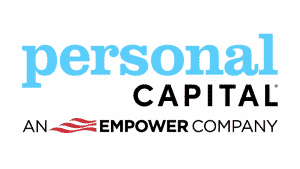

Is it better to allocate money to your employer-sponsored 401(k) or your self-directed traditional IRA or Roth IRA?
Depending on whether your employer matches contributions to your 401(k) and when you max out contributions to each plan, you may be best served not exclusively by the 401(k) or the IRA but instead a combination of both.
In a 401(k) retirement plan, pre-tax dollars are invested on a tax-deferred basis until retirement when withdrawals are taxed. It is similar for a traditional IRA, albeit that the traditional IRA is a self-managed account while the 401(k) is employer-sponsored, and typically has fewer investment options available to you than an IRA.
The Roth IRA differs from both the 401(k) and traditional IRA because after-tax dollars are contributed upfront and invested tax-deferred until withdrawn during retirement years. Unlike the traditional IRA and 401(k) accounts, the Roth IRA has no mandatory withdrawal requirements associated with it when you reach retirement.
Given the similarities between the 401(k) and traditional IRA, how do you choose between funding one or the other, and in which order should you begin allocating money to each? Below we highlight a step-by-step guide for how to select when you contribute to each.
Contribute First To Your 401(k) If Your Employer Matches Funds
If your employer has a 401(k) matching program, it is generally best to choose a 401(k) over an IRA because matched amounts are essentially free money, and they don’t count towards the annual 401(k) contribution limit.
Many employers match the contributions you make to your 401(k), so take full advantage of this “free money” if it is made available to you.
While some employers match only a fraction of each dollar you contribute, others will match your contributions dollar for dollar, which is about as sweet as any employment benefit available.
If your employer does offer 401(k) matching, it is generally only up to the first 6% of your gross earnings.
The combined total of your contributions and your employer’s matched contributions can still amount to a sizeable chunk of change each year. For example, an employee earning $100,000 could enjoy $6,000 of additional money from their employer’s matching program each year for a total 401(k) contribution of $12,000.
And best of all, the funds contributed by an employer are excluded from the annual contribution limit. In 2019, the contribution limit is $19,000 ($25,000 if over the age of 50).
The drawback of a 401(k) compared to an IRA is that your investment choices are fewer and the fees are generally higher.
If your employer does not offer matching it may be best to rollover your 401(k) into an IRA or if you have not yet contributed any funds to a 401(k) plan, invest first in an IRA.
When Employer 401(k) Matching Limit Is Reached, Invest In Your IRA
After you’ve taken full advantage of the contributions your employer is willing to match, allocate funds to either a traditional IRA or a Roth IRA. If you are younger and in a lower tax bracket, the Roth IRA is generally a better choice than a traditional IRA. For individuals closer to retirement or in a higher tax bracket, the traditional IRA is usually the better choice (compared to the Roth IRA).
When you have reached the limit of employer matching available to you in your 401(k), consider allocating new contributions to your IRA. You will have to choose between a traditional IRA and a Roth IRA. If you are unsure which to select, view the pros and cons of a traditional IRA versus a Roth IRA.
A traditional IRA has similar features to a 401(k):
- Contributions are deductible from income-taxes; and
- Earnings on investments are tax-deferred.
A Roth IRA differs from both a traditional IRA and a 401(k) because contributions are made with after-tax dollars, though in all accounts earnings on investments grow tax-deferred.
Because contributions to a Roth IRA are taxed upfront, the Roth IRA is better for individuals who expect their tax rate to increase over time; it is better to lock in a lower tax rate now than risk paying a higher tax rate in the future.
Younger investors in a lower tax bracket are generally better off choosing a Roth IRA while older investors closer to retirement age in a higher tax bracket will be better served with a traditional IRA.
| Age | Tax Bracket | Which IRA? |
| Younger | Low | Roth IRA |
| Older | High | Traditional IRA |
Discover >> How Much Can I Contribute To My Roth IRA?
Mr. Market is fickle and emotional... After ten years of going up in a nearly unbroken line, he abruptly decided to reverse course...
And usher in a bear market that has crushed portfolios — But while most investors were going through the worst year since the Global Financial Crisis...
A small group of 3,700 people had the chance to collect instant "bonus payouts" courtesy of Mr. Market every week.
All thanks to a method most investors have no idea about… watch this demo showing how it works.
401(k) And Traditional IRA Contribution Limits
After your employer has matched your 401(k) contributions up to the maximum threshold level, and you have reached the limit of permissible contributions to your IRA plan, consider then contributing further to your 401(k) if you haven’t already reached its contribution limit.
The contribution limit to a 401(k) plan is a lot higher than it is to a traditional IRA. For a 401(k), $19,000 may be contributed annually ($29,000 if over the age of 50). The limit is comparatively smaller for a traditional IRA, just $6,000 ($7,000 if over the age of 50).
Because of the high 401(k) limit, it is possible that you may still have room to contribute further to your 401(k), even after reaching the limit of matching dollars contributed by your employer and after reaching your IRA contribution limit.
For example, an employee under the age of 50 earning an annual salary of $100,000 who enjoys employer matching contributions to a 401(k) plan up to 6% of salary could follow the following strategy to optimize for employer matching contributions from a 401(k) and lower fees and greater investment choices from an IRA:
- Contribute first to 401(k) plan an amount of $6,000, which employer matches
- Next, contribute to an IRA account up to its contribution limit of $6,000
At the end of step one, $12,000 is contributed to the employee’s 401(k) account and, at the end of step two, $6,000 is added to the employee’s IRA account.
Employer matching funds don’t count towards the 401(k) contribution limit. So, it is possible for the employee to add even more money to the 401(k) even after maxing out the matched funds from the employer and maxing out IRA contributions.
If the employee were to max out the 401(k) also, an additional $13,000 would need to be contributed to the 401(k); this is calculated as the annual contribution limit minus the amount the individual (not the employer) contributed ($19,000 minus $6,000).
The total annual amount the employee could allocate to tax-deferred retirement investments is the sum of all 401(k) contributions ($19,000), employer matching 401(k) contributions ($6,000), and IRA contributions ($6,000), for a total of $31,000.
➤ Free Guide: 5 Ways To Automate Your Retirement
When Should You Choose An IRA Over A 401(k)?
Contribute first to your IRA if your employer doesn’t have a 401(k) matching program in place. After you have reached the IRA contribution limit for the year, then begin contributing to your 401(k).
Choosing to contribute to a 401(k) makes a lot of sense when your employer matches your contributions, because those matching funds equate to free money that can grow tax-deferred until retirement.
But when your employer offers no matching program, it is better to begin allocating funds to your IRA and only start allocating funds to your 401(k) after you have reached your IRA contribution limit.
Even though both the 401(k) and IRA plans facilitate tax-deferred growth, 401(k) plans generally have more restrictive investment options and higher fees.
You enjoy greater investing flexibility, lower fees, and more control with an IRA plan. In a 401(k) plan, you may be restricted to a limited number of mutual funds with high expenses ratios, but in an IRA you will generally enjoy a broader selection of investments, including exchange-traded funds with lower fees.
When your IRA is fully funded, contributing to your 401(k) makes sense in spite of the more restrictive selection of investment choices and higher fees because contributions are tax-deferred and investments grow tax-free.
If 401(k) fees turn out to be excessively high or your investment choices are few and of poor quality, it may be worth considering a Roth IRA, which won’t have the same upfront deductions as a traditional IRA, but still allows for tax-free growth of investments until withdrawals are taken in retirement years.
Compare 401(k) Vs. IRA Retirement Plans
Both 401(k) and IRA plans allow investments to grow tax-deferred. Where 401(k) and IRA plans mainly differ is in contribution limits, fees, tax breaks and investment options.
Contribution limits in a 401(k) plan are higher than in a traditional IRA or Roth IRA account. The range of investment options is generally limited in a 401(k) employer-sponsored plan compared to a self-managed IRA. Roth IRA contributions are not deductible and qualified distributions are not taxed. Contributions to a traditional IRA or 401(k) are tax-deductible but qualified distributions are taxed as ordinary income in retirement years.
The breakdown of how traditional IRA and Roth IRA plans compare to each other and to 401(k) plans is shown below. If you decide upon an IRA, compare among the best IRA providers.
| Traditional IRA | Roth IRA | 401(k) | |
| Contribution Limit (under age 50) |
$6,000 (Traditional IRA Limits) |
$6,000 (Roth IRA Limits) |
$19,000 |
| Contribution Limit (age 50 or above) | $7,000 | $7,000 | $25,000 |
| Contribution Deductibility | Contributions are tax-deductible | Contributions not tax-deductible | Contributions are tax-deductible |
| Tax Impact of Contributions on Income | Generally lowers taxable income; age and income affect it | Contributions are made after-tax so no upfront benefit to income | Lowers taxable income |
| Investment Growth | Tax-deferred | Tax-deferred | Tax-deferred |
| Early Withdrawals | 10% penalty plus taxed at ordinary income rate unless IRA eligibility rules met | Penalty-free as long as Roth IRA eligibility rules are met | 10% penalty plus taxed at ordinary income rate unless 401(k) eligibility rules met |
| Qualified Withdrawals | Taxed at ordinary income tax rate | Tax-free distributions once Roth IRA eligibility rules met | Taxed at ordinary income tax rate |
| Investment Selections | Broad range of investment options | Broad range of investment options | Limited range of investment options |
| Fees | Lower than 401(k) usually | Lower than 401(k) usually | Higher than IRA usually |
| Method Of Funding | You set up an account at a financial institution (select among the best IRA providers) | You set up an account at a financial institution (select among the best IRA providers) | Employer sets up account which is funded through payroll deductions |
Discover >> Find Out How To Rollover a 401(k) To An IRA Account
The SV Bank collapse marked the second-largest U.S. bank to close since the Great Recession…'God have mercy on us all': Robert Kiyosaki warned.
Kiyosaki is turning to gold and silver — a popular hedge against inflation. Gold can't be printed out of thin air like fiat money and it's value is largely unaffected by economic events.
'I'm buying gold because I don't trust the Fed," he said.
source: yahoo!news
Ready to dump your paper assets? Get Your Free Gold & Silver Guide Now
401(k) Vs. IRA: The Good, The Bad & The Ugly
401(k) plans allow participants to contribute higher amounts, allow employers to match participant contributions, and permit higher deductibility limits than IRAs. However, IRAs are more flexible because they can be transferred from one broker to another, generally have lower fees, and have a greater selection of investments.
The pros and cons of 401(k) and IRA accounts are displayed below but to cut to the chase the best way to optimize contributions is as follows:
- Contribute to a 401(k) as much as the company will match
- Fund your IRA until you reach the contribution limit
- After maxing out your IRA contributions, contribute further to your 401(k) until you reach its contribution limit
If your employer does not match contributions then the path below is best:
- Contribute first to your IRA, either traditional IRA or Roth IRA until its contribution limit is reached
- Then fund your 401(k) until you reach its contribution limit
| Traditional IRA | Roth IRA | 401(k) | |

|
Large investment selection compared to 401(k) | Large investment selection compared to 401(k) | Income level and tax filing status do not impact permissible contribution amount |

|
Contributions are tax deductible | Tax-free withdrawals in retirement years | Contributions are tax deductible |

|
Lower fees than a 401(k) | Lower fees than a 401(k) | Greater protection from creditors than IRAs |

|
Greater control over investment choices | Greater control over investment choices | Employers match your contributions |

|
More severe tax impact on early withdrawals compared to a Roth IRA | Contributions are not tax-deductible | Higher fees than a traditional IRA or Roth IRA |

|
Lower contribution limits than a 401(k) | Lower contribution limits than 401(k) | Less control over investment choices |

|
Full deductions dependent on income and filing status | Ineligible to contribute if income above a certain threshold | Fewer investment choices |

|
No employer matching contributions | No employer matching contributions | No flexibility to move assets to another brokerage account while working for the company |
Discover >> Which IRA is best for you, a traditional IRA or a Roth IRA?
Which IRA Provider Is Best?
IRA investors who prefer to manage their own retirement accounts should consider online brokerage platforms that feature research, tools, analyzers, back-testing capabilities and fast order execution, while hands-off IRA investors will find robo-advisor firms, such as Betterment and Personal Capital, that offer automated investing services to be a better fit.
The first step in choosing an IRA provider is figuring out whether you want to be involved in the management of your retirement assets or prefer to be hands-off. If you would prefer your money to be invested without needing to worry much about it, a robo-advisor might be a good solution for you. On the other hand, if you enjoy researching stocks, exchange-traded funds, mutual funds, and other securities then a self-managed account at a brokerage firm would be a better fit.
BEST IRA ROBO-ADVISOR: BETTERMENT
Betterment is a robo-advisor firm that uses a computer model and a team of investment experts to manage client funds. Betterment has low fees (compared to traditional financial advisors) that range from 0.25% to 0.40% and offers both a purely automated investing service as well as a higher tier service that includes access to human financial advisors.
Betterment caters to a range of IRA account types, including traditional IRA, Roth IRA, SEP IRA, and Rollover IRA. For taxable account holders, Betterment provides a free tax-loss harvesting service.
Betterment offers clients a retirement calculator, RetireGuide, which monitors your progress towards retirement goals, highlights shortfalls along the way, and is designed to get you back on track.
| BETTERMENT SPOTLIGHT | |
InvestorMint Rating 5 out of 5 stars |
via Betterment secure site |
BEST IRA ROBO-ADVISOR: PERSONAL CAPITAL
Personal Capital goes beyond offering a purely automated investing service as most robo-advisors do by pairing clients with dedicated financial advisors.
Clients with large account balances are assigned two dedicated financial advisors. The drawback is that Personal Capital commands higher fees than many other robo-advisors on account of providing a higher level of service.
For IRA account holders who want a little extra hand-holding and a more personal investing experience, Personal Capital is a good solution.
It has higher minimums to open an account compared to many robo-advisors but any user can freely download Personal Capital’s excellent mobile app which tracks spending, net worth, investments, as well as any debts or loans you may have outstanding.
Simply link your third-party bank, brokerage or credit card accounts to the app, and you will be set to go.
| PERSONAL CAPITAL SPOTLIGHT | |
|
4.5 out of 5 stars |
via Personal Capital secure site |
BEST IRA PROVIDER FOR TRADERS: TASTYWORKS
Active traders who fell in love with the extensive screening, back-testing, and charting tools at Tom Sosnoff’s former firm will find similar capabilities at tastyworks, with an added benefit: no commissions costs when closing options contracts, and low fees overall.
For IRA account holders, no maintenance fee is applied. Plus active traders will enjoy fast order executions, industry-leading customer support (the CEO sometimes helps out on the support desk), advanced tools, screeners and analyzers, as well as advanced order execution, including complex options spreads.
| tastytrade SPOTLIGHT | |

Investormint Rating 4.5 out of 5 stars |
via tastytrade secure site |
Official tax return reveals how one trader nabbed annual gains of 228%, 309% and 339%. His tax return was released online, exposing this simple trading technique used to pocket nearly half a million in profits.
Click here to see the official tax return before it is deleted...











Leave a Reply